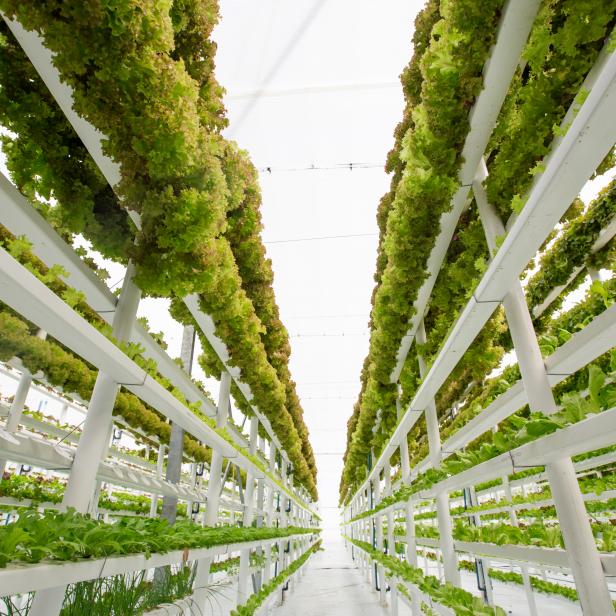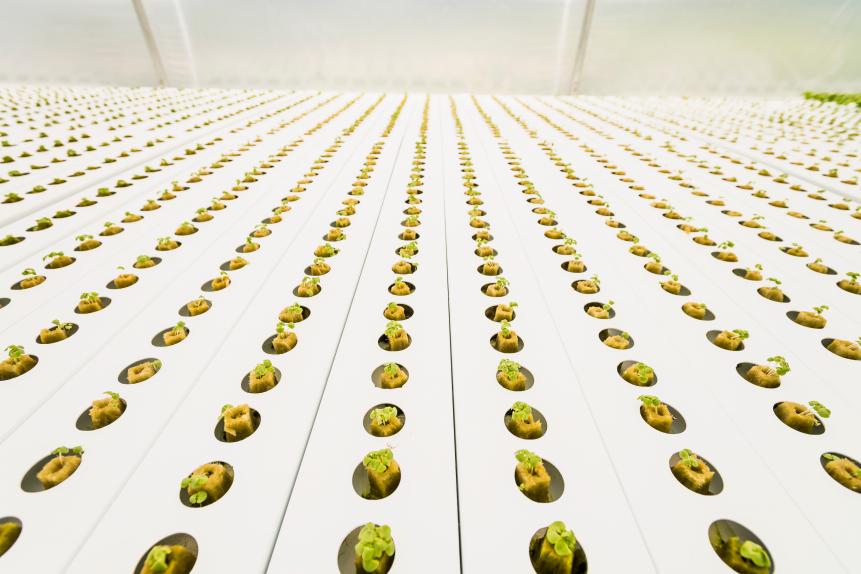
LouisHiemstra
Vertical Farming: Raising Agriculture’s Potential and Lowering its Environmental Impact
Our planet is finite and with the population growing, how do we provide food to the world without taking up more space?
Vertical farming is a hugely promising agricultural technique that aims to produce more food to meet the growing population on our finite planet. Techniques include growing in vertical frames or even in high-rise farms, saving on precious ground space, while moving farms into urban areas, and producing nutritious crops without topsoil.
Traditional farming needs a lot of space to tend livestock and fertile soil to grow either food crops or feed for livestock. Typically that means clearing forest or other wild habitats, but the arrival of vertical farming means using much less space and offers an ingenious solution to feeding more people quickly.
The United Nations estimates that the world’s population will hit nearly 10 billion by the year 2050. Almost 70 per cent of those people will live in and around cities. In North America, this proportion could be even higher as more than 80 percent already live in urban areas.
Vertical farming allows food production facilities to be built close to population centers rather than in rural areas. Sewing vegetables and fruit in stacked planters in underground complexes, on top of buildings or even in high-rise facilities, means food production can expand upwards rather than outwards. The crops raised also travel fewer miles to customers and can be grown fresh in urban surroundings – reducing the amount of food miles per serving.
Climate change is fuelled by traditional and intensive farming practices. Scientists say that the world should switch from meat to plant-based diets, as well as improving food management technologies and reducing food waste, to help preserve the environment and reduce greenhouse gas emissions.
Growing crops indoors allows farmers to strictly control water, temperature and light conditions and maximise yield. Using colored LED lights allows growers to target blue wavelengths to stimulate leaf growth and red light to encourage flowering. LED lights are also more efficient and produce less heat than traditional grow lights so cutting down on energy wastage.

Mark Edward Atkinson/Tracey Lee
Vertical farmers use techniques such as hydroponics, where nutrient-rich water is circulated around the plant’s roots, so plants can be raised without soil. Other growing systems include aquaponics, where plants are fed using nitrate-rich water filtered from fish tanks (creating a recycled source of fertiliser) or aeroponics, using nutrient water mist systems that reduce water use by more than 90 per cent.
Aeroponics was a technique developed by NASA as a way for astronauts to grow in space and feed themselves without soil while preserving precious water supplies. All of these soil-less growing techniques use less, or no, pesticides and herbicides, less fertilizer, and recycle water with less waste. Plants can be sewn and harvested year-round, free from adverse weather conditions such as drought or flooding.
“This is the farming of the future,” said Paul Myers, co-founder of vertical farming enterprise Farm Urban. “Pesticide-free and moving from the traditional horse and tractor agriculture that is steadily destroying the planet to a more sustainable approach.”
The global vertical farming market is expected to be six times bigger in 2026 than it is today. This is fuelled in part by rising demand for organic, pesticide-free foods, but also by countries looking to increase their food security and cut down on imports – the UK for example uses more than 70 per cent of its land mass for agriculture but imports more than half of its food.
Turning urban spaces into growing areas brings agriculture to the people. Spaces include an underground car park in Paris growing mushrooms, a former road tunnel in South Korea growing more than 60 different fruits and vegetables, and a hydroponic operation in a Second World War air raid shelter in London.
Californian vertical farm Plenty calculates it can grow 350 times more of its crops – kale, bok choy and fennel among others – than a field of the same size.
Innovations being introduced by other companies include the development of a rack greenhouse that rotates planting boxes inside a vertical greenhouse, so no artificial light is needed. Powering facilities using biogas from anaerobically digested plant waste is another.
Many of the world’s largest vertical farms are based in the US. AeroFarms in New Jersey was previously the world’s largest facility, growing 1.7 million pounds of produce aeroponically each year in a former steel factory. “This is a way of growing that has 390 times more productivity per square foot than a field farm,” said chief marketing officer Marc Oshima.
Crop One in Dubai is currently the largest. Lack of arable soil and high temperatures are a problem in Dubai so the United Arab Emirates imports more than 80 per cent of its food annually. Solar-power provides much of the farm’s energy and its output will hit almost 2.2 million pounds of leafy greens each year.
On a smaller scale, vertical farm units are now being incorporated into grocery stores. Two Seattle-area stores feature modular hydroponic facilities to grow varieties of lettuce and herbs. In London the Swedish furniture store Ikea used its Space10 innovation lab to create a prototype salad bar (called Lokal) based on vertical farming.
In future Ikea wants to link its growing units up to sensors and virtual assistants so people can ‘talk’ to plants and monitor them, and learn more about sustainable food. Next up could be the adoption of household in-kitchen asystems for people interested in growing their own produce.
As the vertical farming industry expands it is worth noting that it has limitations – it only works for some crops, is labor intensive, plus startup technologies and urban locations can be expensive.
Yet, the mix of traditional farming with high yield, local growers offers to rebalance agriculture and address concerns about global nutrition and feeding more people with the same or fewer resources.
The Association for Vertical Farming offers more information on the techniques alongside online courses for growers.


















